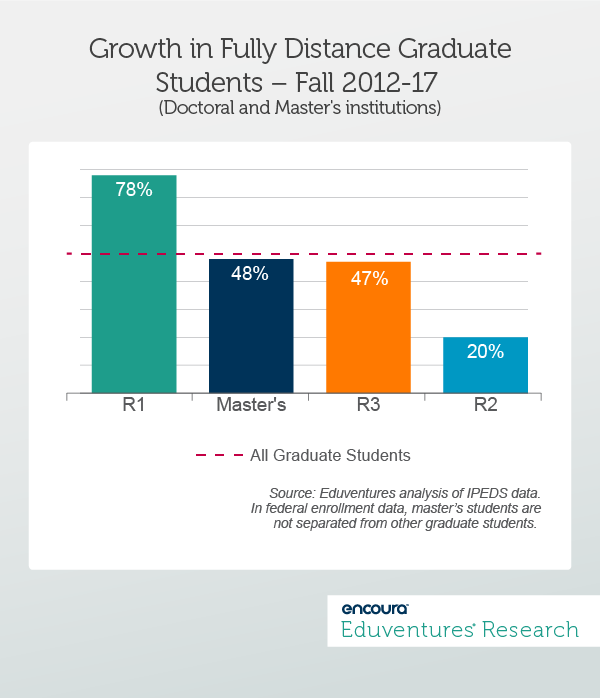There used to be an inverse relationship between top graduate schools and online master’s degrees. The more prestigious the institution, the less likely it was to offer any degree fully online.
Deans and faculty eyed online suspiciously, convinced that the delivery mode undermined everything that made their programs so valuable. How could an online degree compare to the rigor and intimacy of a great university? Wrong student, wrong model, wrong brand.
But things are changing. Elite graduate schools are now moving aggressively to offer online master’s programs. Are top schools simply catching up online, or are we on the verge of a new market dynamic? What has been forecast or feared for two decades may finally be about to happen. Will the best schools on campus also become the best—and biggest—schools online?
Federal enrollment data offers a window into what is going on. Figure 1 summarizes R1 graduate enrollment, overall and online. R1s are the 115 most selective and research intensive universities in the nation, using the well-known Carnegie Classification. R2s and R3s grant doctoral degrees but undertake less research. Master’s institutions grant few or no doctoral degrees, but have plenty of master’s students.

Recent Evidence
Two other factors need to be taken into account to appreciate the emerging power of the R1 online master’s degree vanguard:- Evidence of significant program growth since 2016/17
- The disruptive sharp tip of R1 online master’s programs

